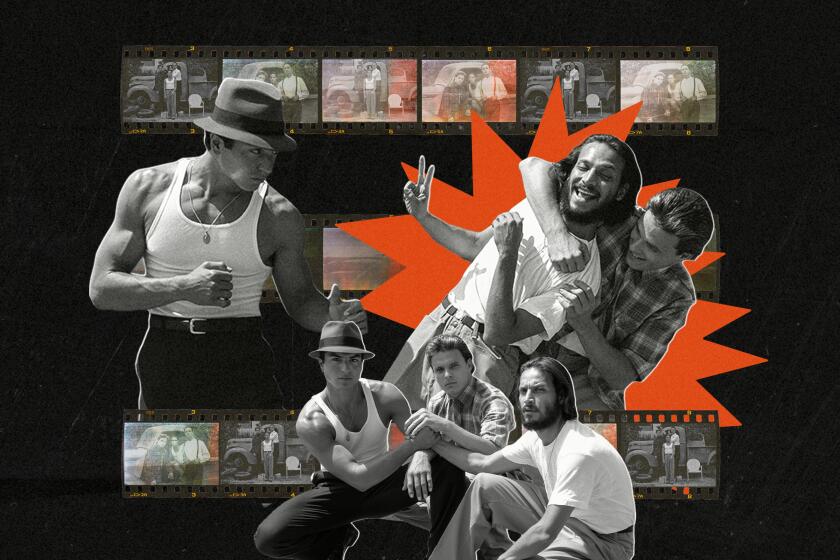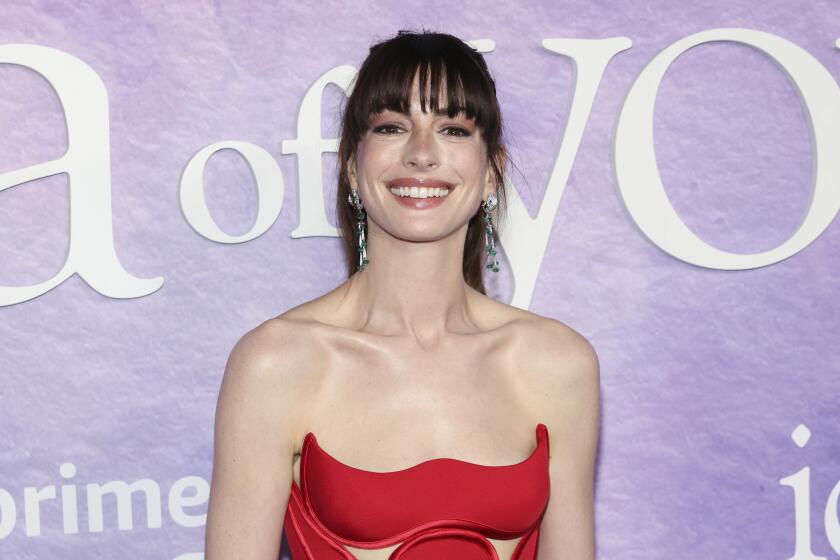‘Paris’ in an innocent time
The genesis of the nostalgically tinged French film “Paris 36,” which opens Friday in limited release, was a song. Make that several songs.
A few years back, the popular Gallic music team of lyricist Frank Thomas and composer Reinhardt Wagner approached director Christophe Barratier with a series of songs they had written. “They had a little perfume of the 1930s,” Barratier said as he relaxed in the lounge at the Four Seasons on a recent visit to Los Angeles. “They were talking about modest people in working-class neighborhoods,” he recalled. “The songs were very great. They didn’t know if they should do them as an album or on stage. I said, ‘Why not a movie?’ ”
Barratier, whose 2004 film, “The Chorus,” was nominated for a best original song Oscar, envisioned a film that honored the poetic realism of the 1930s -- most especially the movies of Marcel Carne.
“I imagined something like a melodrama with music,” Barratier said. “Not a tribute to the music hall, not a tribute to the theater, but telling stories of characters and brotherhood, because friendship was what was really symbolic of the 1930s.”
The period was also the last gasp of fun for the French before World War II. As Barratier described it: “During this atmosphere, the French were dancing on a volcano.”
“Paris 36” is an ensemble piece set in spring 1936 in a working-class district of the city nicknamed the Faubourg. In the center of the shabby town square is a neighborhood music hall called the Chansonia that has closed because of the neighborhood “godfather” and his thugs.
But three former Chansonia employees -- a stagehand named Pigoil (Gerard Jugnot); the womanizing, left-wing electrician Milou (Clovis Cornillac); and Jacky (Kad Merad), a former sandwich man who believes he is a remarkable impressionist -- band together to reopen the theater. Their star attraction is the young actress-singer Douce (newcomer Nora Arnezeder), who may be the mistress of the godfather.
The film opens with a 2-minute, 15-second crane shot without cuts that flies down from the rooftops of the city and swoops inside the theater. But interestingly enough, the movie was shot mostly on soundstages in Prague in the Czech Republic. “Those locations [of 1930s] Paris don’t exist anymore, except one or two locations in the Montmartre,” Barratier said. “The old Paris has totally disappeared.”
That Paris had to be re-created on Czech soundstages was an opportunity for the director to craft his vision of the city with production designer Jean Rabasse. Barratier also hired Clint Eastwood’s cinematographer, Tom Stern.
“I remember, with ‘Million Dollar Baby,’ I was amazed by the photography, because Tom is not afraid to do very hard lights on the face with shadows and contrasts. That is not really a French approach to cinematography.
“For example, [in “Paris 36”], if it’s raining, you can see the rain in the shadows on the character’s face. In France, [cinematographers] use no lights, or natural lights, for realism. That is why I hired him, because he was really the master for this. It was a huge production, and I needed someone . . . to find the light I wanted.”
The impressionistic re-creation of Paris also captivated the actors. “It was fun but also magical to do the film,” said Arnezeder, who was 18 when she made the movie. “I was nervous because I wanted to do good and succeed and prove to the director that he was right to hire me.”
Born in 1963, Barratier grew up in the film business. His uncle, Jacques Perrin, produced the film; and his mother, Eva Simonet, was a stage actress.
“I love actors,” he said. “I am very close to them. I know their fears and their tendencies and they listen to me, because they know I love them.”
--
More to Read
Only good movies
Get the Indie Focus newsletter, Mark Olsen's weekly guide to the world of cinema.
You may occasionally receive promotional content from the Los Angeles Times.







